Identifying Schistosoma japonicum excretory/secretory proteins and their interactions with host immune system
- PMID: 21887319
- PMCID: PMC3161075
- DOI: 10.1371/journal.pone.0023786
Identifying Schistosoma japonicum excretory/secretory proteins and their interactions with host immune system
Abstract
Schistosoma japonicum is a major infectious agent of schistosomiasis. It has been reported that large number of proteins excreted and secreted by S. japonicum during its life cycle are important for its infection and survival in definitive hosts. These proteins can be used as ideal candidates for vaccines or drug targets. In this work, we analyzed the protein sequences of S. japonicum and found that compared with other proteins in S. japonicum, excretory/secretory (ES) proteins are generally longer, more likely to be stable and enzyme, more likely to contain immune-related binding peptides and more likely to be involved in regulation and metabolism processes. Based on the sequence difference between ES and non-ES proteins, we trained a support vector machine (SVM) with much higher accuracy than existing approaches. Using this SVM, we identified 191 new ES proteins in S. japonicum, and further predicted 7 potential interactions between these ES proteins and human immune proteins. Our results are useful to understand the pathogenesis of schistosomiasis and can serve as a new resource for vaccine or drug targets discovery for anti-schistosome.
Conflict of interest statement
Figures
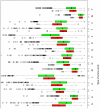

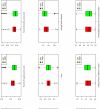
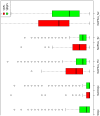

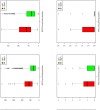
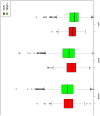

Similar articles
-
Excretory/secretory proteome of the adult developmental stage of human blood fluke, Schistosoma japonicum.Mol Cell Proteomics. 2009 Jun;8(6):1236-51. doi: 10.1074/mcp.M800538-MCP200. Epub 2009 Mar 18. Mol Cell Proteomics. 2009. PMID: 19299421 Free PMC article.
-
Identification of proteins inducing short-lived antibody responses from excreted/secretory products of Schistosoma japonicum adult worms by immunoproteomic analysis.J Proteomics. 2013 Jul 11;87:53-67. doi: 10.1016/j.jprot.2013.05.003. Epub 2013 May 16. J Proteomics. 2013. PMID: 23684788
-
Excretory/secretory proteome of 14-day schistosomula, Schistosoma japonicum.J Proteomics. 2016 Jan 1;130:221-30. doi: 10.1016/j.jprot.2015.10.001. Epub 2015 Oct 8. J Proteomics. 2016. PMID: 26453986
-
A vaccine against the Asian schistosome, Schistosoma japonicum: an update on paramyosin as a target of protective immunity.Int J Parasitol. 1997 Oct;27(10):1213-9. doi: 10.1016/s0020-7519(97)00119-7. Int J Parasitol. 1997. PMID: 9394192 Review.
-
Prospects for development of a transmission blocking vaccine against Schistosoma japonicum.Parasite Immunol. 2005 Jul-Aug;27(7-8):297-308. doi: 10.1111/j.1365-3024.2005.00784.x. Parasite Immunol. 2005. PMID: 16138851 Review.
Cited by
-
Plasma-derived exosomal miRNA as potential biomarker for diagnosis and prognosis of vector-borne diseases: A review.Front Microbiol. 2023 Apr 13;14:1097173. doi: 10.3389/fmicb.2023.1097173. eCollection 2023. Front Microbiol. 2023. PMID: 37125151 Free PMC article. Review.
-
Schistosoma japonicum cathepsin L1: A potential target for anti-schistosomiasis strategies.PLoS Negl Trop Dis. 2025 Jul 7;19(7):e0013241. doi: 10.1371/journal.pntd.0013241. eCollection 2025 Jul. PLoS Negl Trop Dis. 2025. PMID: 40623040 Free PMC article.
-
Advanced enzymology, expression profile and immune response of Clonorchis sinensis hexokinase show its application potential for prevention and control of clonorchiasis.PLoS Negl Trop Dis. 2015 Mar 23;9(3):e0003641. doi: 10.1371/journal.pntd.0003641. eCollection 2015 Mar. PLoS Negl Trop Dis. 2015. PMID: 25799453 Free PMC article.
-
Time-course whole blood transcriptome profiling provides new insights into Microtus fortis natural resistance mechanism to Schistosoma japonicum.Heliyon. 2024 Sep 26;10(19):e38067. doi: 10.1016/j.heliyon.2024.e38067. eCollection 2024 Oct 15. Heliyon. 2024. PMID: 39398025 Free PMC article.
-
Immunoproteomics Identification of Major IgE and IgG4 Reactive Schistosoma japonicum Adult Worm Antigens Using Chronically Infected Human Plasma.Trop Med Health. 2012 Sep;40(3):89-102. doi: 10.2149/tmh.2012-16. Epub 2012 Oct 24. Trop Med Health. 2012. PMID: 23264728 Free PMC article.
References
-
- van der Kleij D, Latz E, Brouwers JF, Kruize YC, Schmitz M, et al. A novel host-parasite lipid cross-talk. Schistosomal lyso-phosphatidylserine activates toll-like receptor 2 and affects immune polarization. J Biol Chem. 2002;277:48122–48129. - PubMed
-
- Pearson MS, McManus DP, Smyth DJ, Lewis FA, Loukas A. In vitro and in silico analysis of signal peptides from the human blood fluke, Schistosoma mansoni. FEMS Immunol Med Microbiol. 2005;45:201–211. - PubMed
-
- Perez-Sanchez R, Ramajo-Hernandez A, Ramajo-Martin V, Oleaga A. Proteomic analysis of the tegument and excretory-secretory products of adult Schistosoma bovis worms. Proteomics. 2006;6(Suppl 1):S226–236. - PubMed
Publication types
MeSH terms
Substances
LinkOut - more resources
Full Text Sources
Medical

